Hey there! If you've ever faced the daunting task of drafting a letter for worker injury compensation, you know it can be a bit tricky. It's essential to convey your situation clearly and persuasively to ensure you receive the support you deserve. From detailing the incident to outlining the impact on your daily life, every word matters in making your case. Ready to navigate this process with confidence? Let's dive in and explore the key elements you need to include!
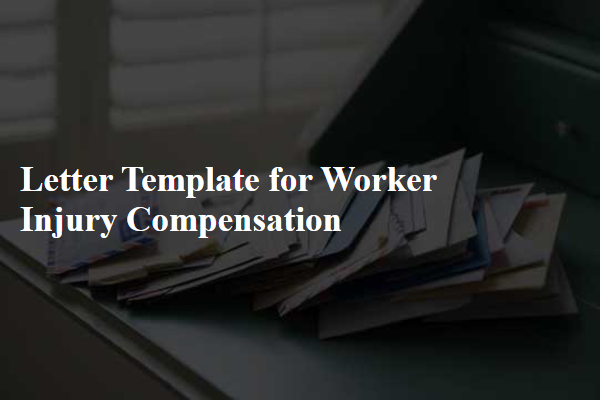
Personal and Injury Details
In a worker injury compensation claim, personal details such as the employee's full name, job title, and employee ID (if applicable) are crucial. Injury details include the date of the incident (for example, September 15, 2023), location of the workplace incident (such as the loading dock of XYZ Corporation in New York City), and a comprehensive description of the injury (for instance, a fractured wrist sustained while lifting heavy equipment). Documentation supporting the claim may consist of medical reports, incident reports, and witness statements. Additional context may involve the nature of the work duties at the time of the injury, potential safety violations observed, and the subsequent medical treatment received, such as a visit to City Hospital's emergency room for evaluation and care. Such details create a clear framework for the compensation request.
Incident Description
A worker slipped on wet flooring in the warehouse of XYZ Logistics on October 15, 2023, resulting in a right ankle sprain. The incident occurred during peak operational hours when employees were busy unloading freight. The floor had not been properly marked with caution signs, contributing to the visibility issue. Emergency services were called to the scene, and the injured worker was transported to City Hospital for evaluation. Medical staff confirmed a moderate sprain, requiring a brace and physiotherapy for recovery. The warehouse management initiated an internal review to ensure compliance with safety regulations and prevent future incidents.
Medical Treatment and Documentation
Medical treatment for worker injuries, such as incidents occurring on construction sites or in manufacturing settings, is crucial for recovery and compensation claims. Immediate assessment by healthcare professionals, like orthopedic surgeons or occupational therapists, is essential in diagnosing the severity of injuries. Comprehensive documentation, including medical reports, treatment plans, and rehabilitation records, must be collected to support compensation claims. Billing statements from hospitals and clinics outlining the costs (including emergency services, follow-up appointments, and physical therapy sessions) provide necessary evidence for reimbursement. Furthermore, incident reports filed by supervisors at the workplace in cities like New York or Chicago can substantiate claims, demonstrating employer accountability in workplace safety compliance. Keeping accurate records of all medical visits and communications with insurance representatives is vital for effective compensation processing.
Lost Work Time and Financial Impact
Injuries sustained in the workplace can lead to significant lost work time, as seen in industries such as construction and manufacturing. Many workers face weeks or even months off due to recovery from severe injuries. The financial impact of lost wages during this period can be drastic, particularly for individuals earning an hourly wage, leading to decreased ability to cover essential expenses like rent, bills, and medical care. For instance, in 2021, the U.S. Bureau of Labor Statistics reported a median of 10 days away from work for nonfatal workplace injuries, highlighting the challenge of financial stability for affected employees. Workers' compensation claims often aim to mitigate these financial strains, ensuring that injured workers receive necessary financial support during their recuperation process, allowing them to focus on healing without the overwhelming burden of financial insecurity.
Employer's Responsibility and Contact Information
Employer's responsibility for worker injury compensation involves ensuring a safe workplace in compliance with Occupational Safety and Health Administration (OSHA) regulations. Workers' Compensation Insurance, mandated in most states, provides financial support for medical expenses and lost wages incurred from workplace injuries. Employers must report any incidents promptly within designated timeframes, typically within 24 hours, and maintain open lines of communication with employees regarding claims processes. Additionally, employer contact information must be clearly stated, including the company name, address, phone number, and designated claims representative, enabling injured workers to file claims efficiently. Proper documentation and adherence to legal requirements are crucial elements in supporting employees during recovery.

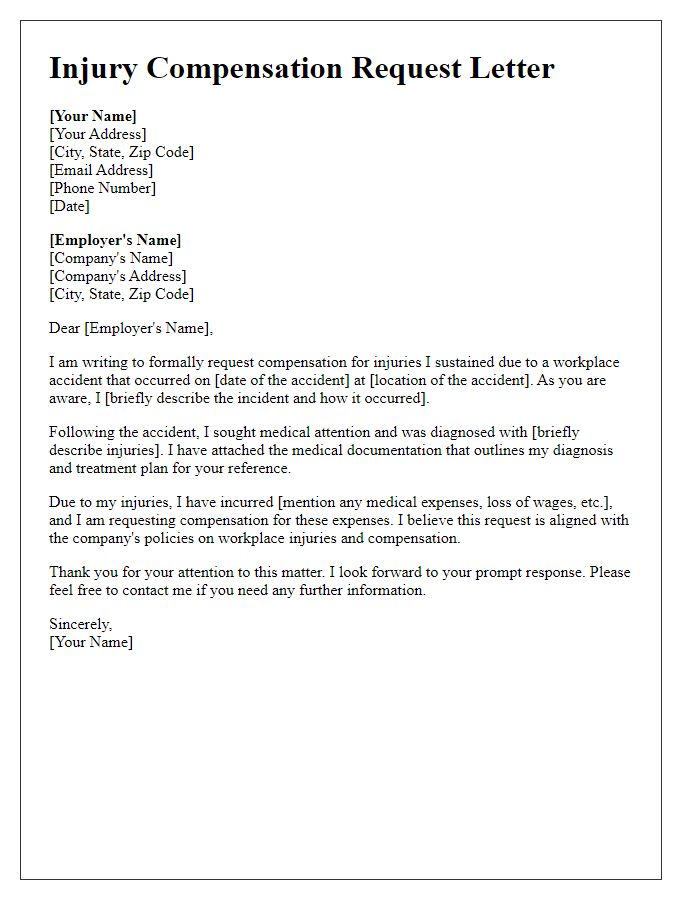


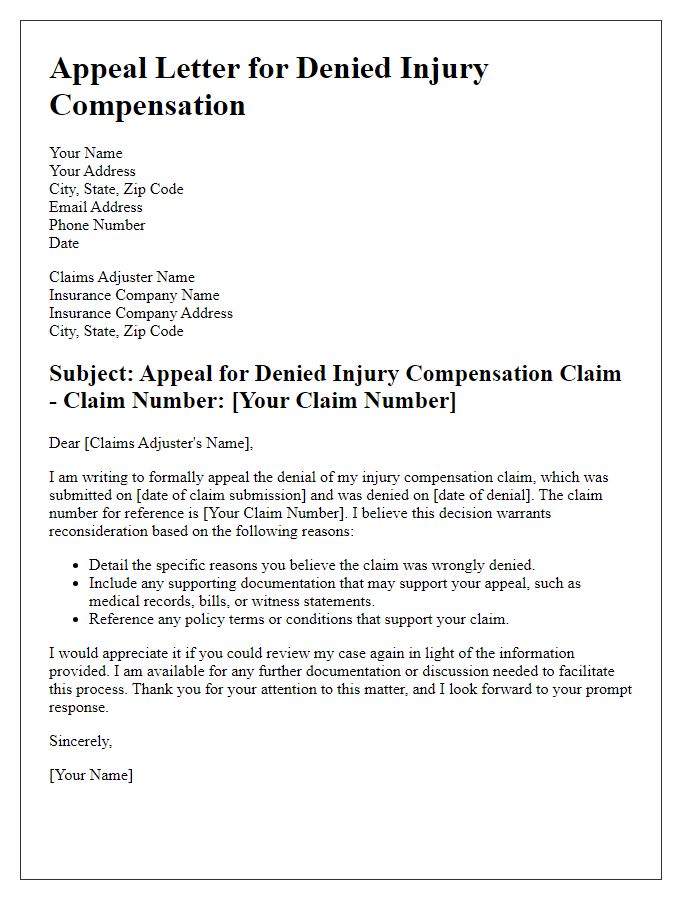
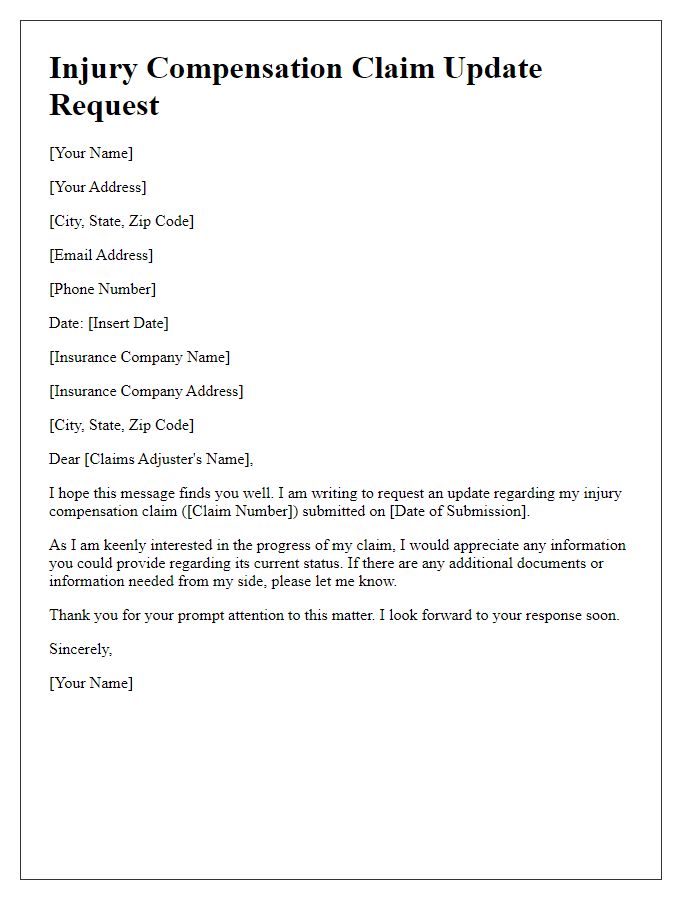
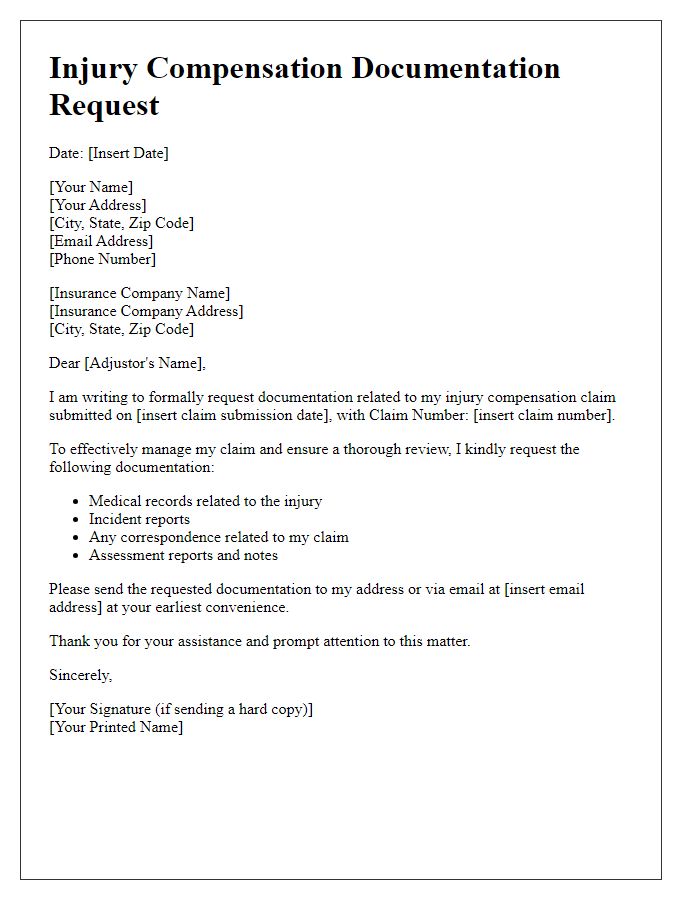
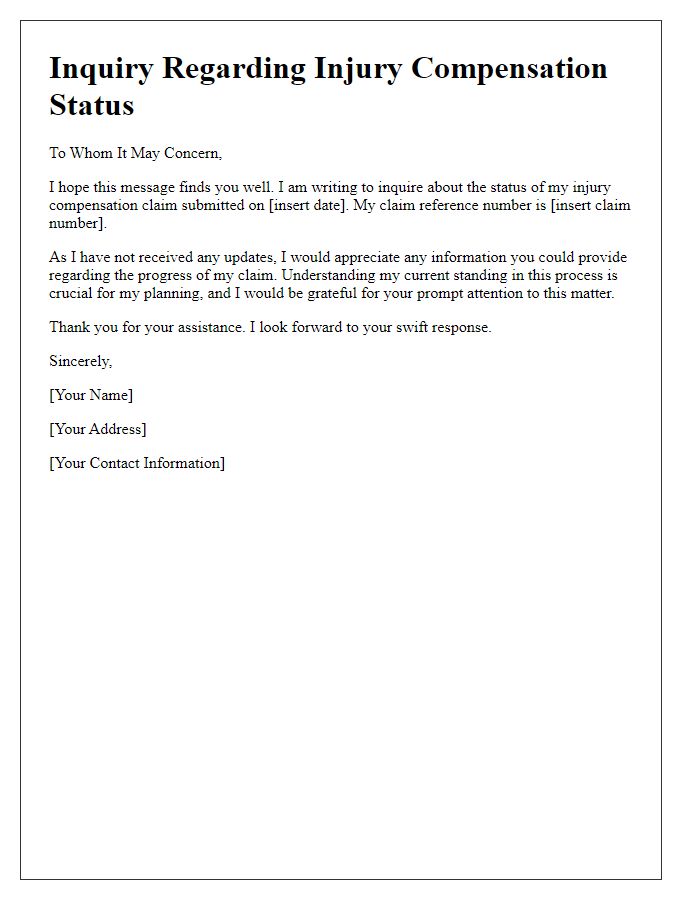
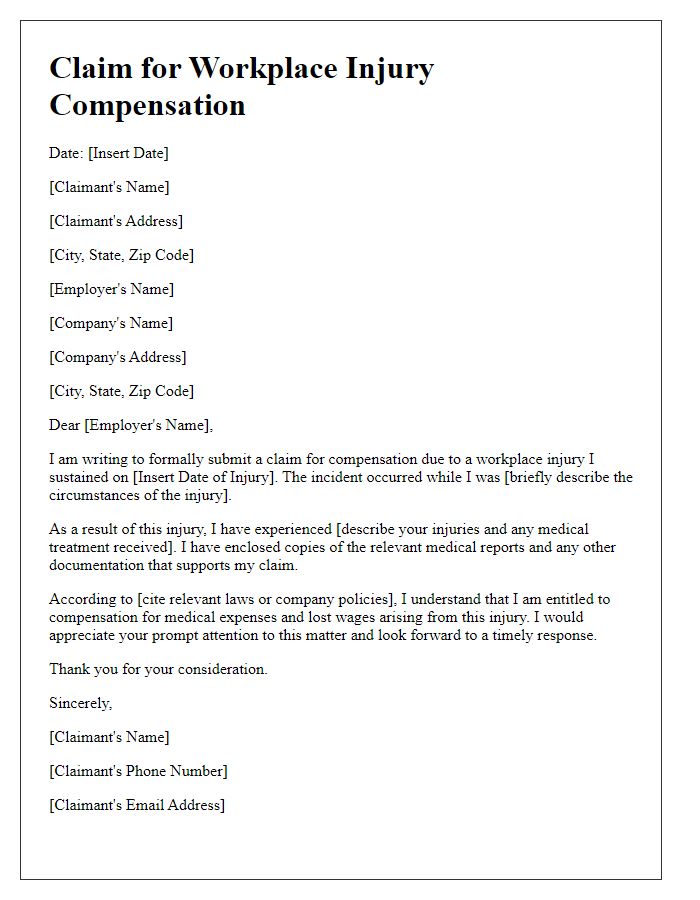
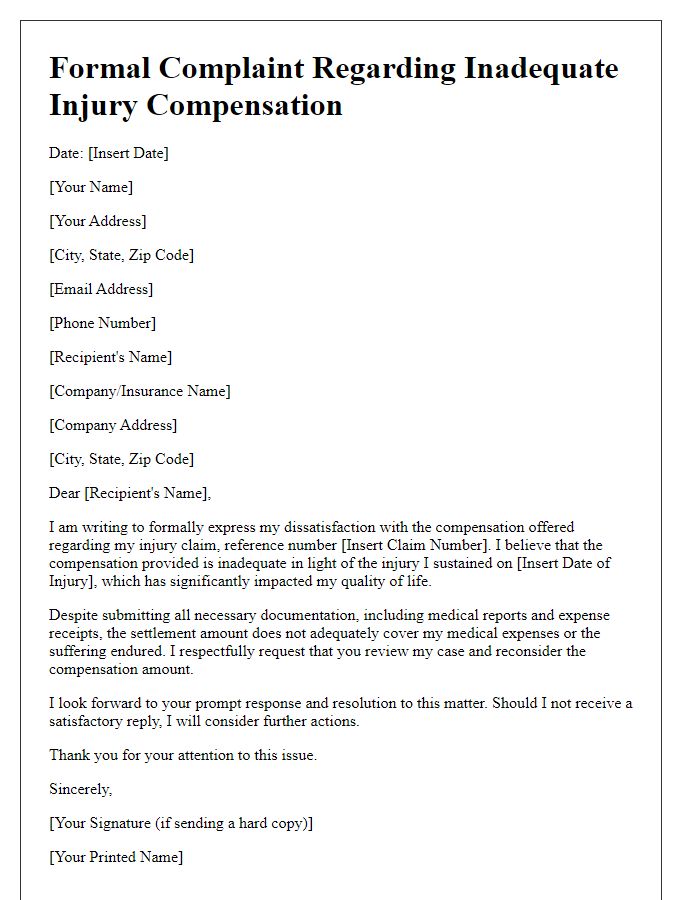
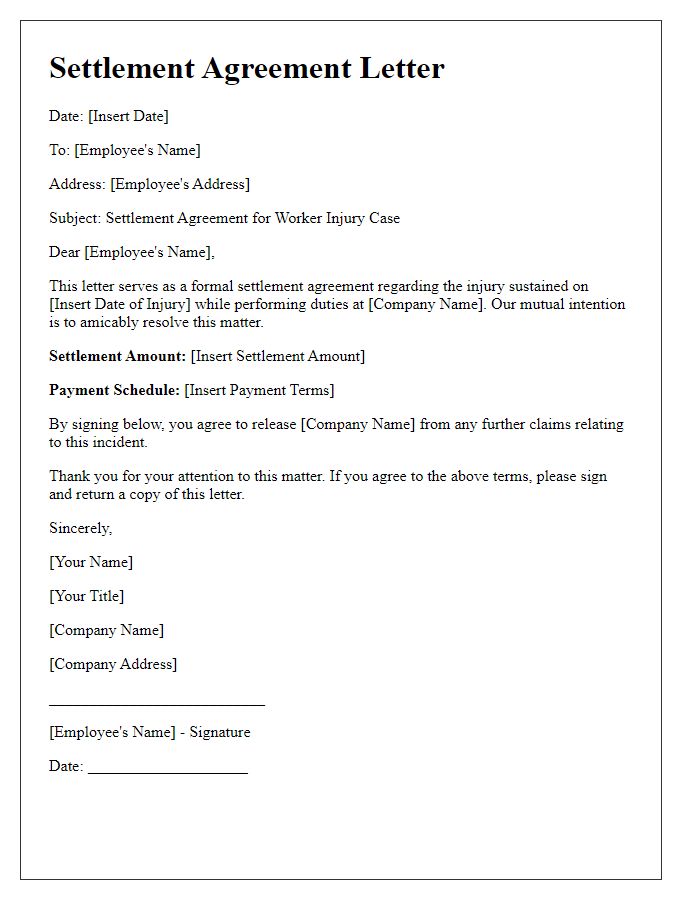


Comments